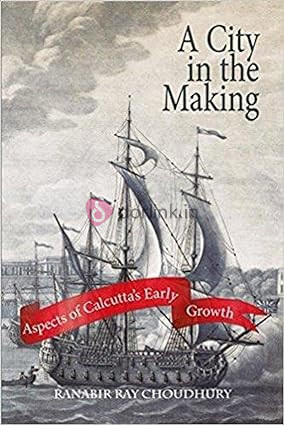Writer : Ranabir Ray Choudhury
- Shipping Time : 10 Days
- Policy : Return/Cancellation?
You can return physically damaged products or wrong items delivered within 24 hours with photo/video proof.
Contact Customer Support for return initiation and receive return authorization via email. Securely package for return.
Refunds for eligible returns are processed within 7-10 business days via Bank Transfer.
Order cancellation allowed within 24 hours of placing it. Standard policy not applicable for undamaged/wrong product cases. Detailed info. - Genre : Essays>Archaeological & Historical Facts
- Publication Year : 2016
- ISBN No : 978-93-85285-28-8
- Binding : Card Board (Hard) with Gel Jacket
- Pages : 564
- Weight : 735 gms
- Height x Width x Depth : 8.5x5.5x1.2 Inch
If so, it will be notified
About the Book
Calcutta: From Mudflats to Metropolis
The Dramatic Rise of an Iconic City
"By the banks of the Hooghly, where three humble villages once stood, a city began to rise—chaotic, defiant, and destined for greatness."
When Job Charnock arrived at Sutanati in 1690, he stepped into a world of bustling trade, muddy pathways, and flickering torches by the river. What was then a mere cluster of villages would, within a century and a half, transform into the second city of the British Empire—grand, teeming, and full of contradictions.
This riveting historical account, drawn from rich archival records, brings to life the unfolding drama of Calcutta’s early growth. Through three gripping sections, the book delves into:
The raw, unplanned expansion of a settlement struggling with disease, floods, and lawlessness, culminating in its fall to Siraj-ud-Daula in 1756.The relentless southward and eastward sprawl, as roads were carved, bazaars emerged, and the great Maidan took shape amid power struggles and shifting fortunes.The dawn of visionary town planning under Lord Wellesley, setting the stage for a modern metropolis, with the Lottery Committee of 1817 ushering in a new era of structured urbanization.
With its vivid storytelling and immersive detail, Calcutta: From Mudflats to Metropolis is more than just history—it is a sweeping saga of ambition, resilience, and the relentless march of a city toward its destiny. A gripping read for lovers of history, urban transformation, and the spirit of a city that refuses to fade.

